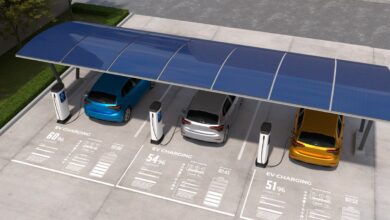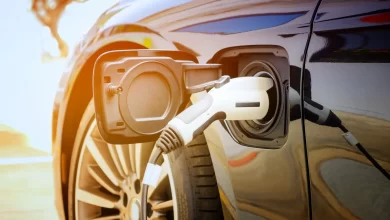Six Electric Sedans Were Driven Until They Died. The Results Are Fascinating

CarWow tested BYD, Porsche, BMW, Mercedes, Polestar and Tesla EVs. One had the best range.
Jun 13, 2024 at 2:33pm ET
Nobody wants to get stranded on the side of the road in an electric car. But some brave souls do exactly that on purpose. For science.
Mat Watson of the CarWow YouTube channel, along with his team, drove six electric sedans until they died to see exactly how much range they could deliver in the real world—and what happens when their battery level hits zero.
Electric car range, explained
Range may be the single data point that’s of most concern to potential EV buyers. But it’s more complicated than just a number on a spec sheet. Weather, driving habits and the car itself can impact how much range a driver sees. Real-world range tests can help provide a fuller picture.
These were the contenders:
To get something out of the way up front, CarWow is based in the U.K., so the range estimates the channel quotes aren’t the Environmental Protection Agency figures we’re used to. One of the cars, the BYD Seal, isn’t sold in America. It may never be due to the Biden Administration’s new 100% tariffs on Chinese electric vehicles. Since they’re European-spec models, some other details may differ from their U.S. counterparts.
But CarWow aimed to make the test as representative of real-world conditions as possible. As a result, it isn’t overly scientific or controlled—unlike InsideEVs’ 70-mph highway EV range tests. Rather, the CarWow team set out to drive these cars across the U.K. like a regular person probably would.
They put the cars in their standard drive modes, used the heater as they pleased and drove at the posted speed limit. Once warning signs about battery life started popping up, the drivers would switch into an energy-conserving drive setting and try to maximize range. A rainstorm on the route added another dose of reality.
“After all, what is the point of buying an electric car, driving along in eco mode all the time, with the heater off, and at 50 miles per hour everywhere?”, Watson said.
I encourage you to watch the 50-minute video linked above if you want every last detail—as well as a mini-review of each car courtesy of Watson. But if you just want the range results, here’s how far each EV went, along with its battery capacity, observed efficiency in the test and advertised range.
| Model | Battery Size | Observed Range | Observed Efficiency | Advertised Range (European WLTP cycle) | % Of Advertised Range Achieved |
| Porsche Taycan | 97 kWh | 368 miles | 3.8 mi/kWh | 421 miles | 88% |
| Mercedes EQE | 89 kWh | 357 miles | 4.0 mi/kWh | 380 miles | 94% |
| Tesla Model 3 | 75 kWh | 352 miles | 4.7 mi/kWh | 390 miles | 90% |
| Polestar 2 | 79 kWh | 332 miles | 4.2 mi/kWh | 406 miles | 82% |
| BYD Seal | 82.5 kWh | 310 miles | 3.8 mi/kWh | 354 miles | 82% |
| BMW i5 | 81 kWh | 296 miles | 3.7 mi/kWh | 362 miles | 82% |
In a sense, it isn’t a huge shocker that the Taycan won the distance contest, given it’s also equipped with the largest battery. Plus, Porsche tweaked the EV to give it better efficiency and range for the 2025 model year. And it also isn’t too surprising that these cars did not live up to their estimated ranges, since the test mostly comprised highway driving, which is especially energy-intensive.
Even though the Taycan beat out the rest, it isn’t even the clear winner here when you get a bit granular. Sure, it went the farthest. But it did so with a huge battery and middling efficiency. The Mercedes EQE excelled as far as living up to its manufacturer-advertised range.
Say what you will about Tesla’s lineup getting stale or the competition closing in, but the Model 3 really holds its own here. It has the smallest battery of the bunch but delivered the best efficiency by a solid margin. So, in terms of overall distance traveled, it trounced three models with bigger battery packs. And it’s considerably cheaper to buy than the luxury cars in spots one and two.
So, what happens when an EV completely depletes its battery? Not a whole lot. First, a car serves up increasingly urgent warnings, then it reduces power. After some time, you just slow to a halt. Even after a car shows zero miles of range remaining, it’ll usually have several miles left in the “tank.”
Plus, here’s something new I learned. You can hop out of a “dead” EV and come back to it, and it may offer up just a little bit more range even after it slows to a stop. That’s what the BYD driver did, managing to coast downhill and just barely make it to a fast charger.
Contact the author: tim.levin@insideevs.com
Read more



